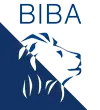Not all Shortfall Gap Insurance for your Mercedes is the same!
What makes Shortfall Gap Insurance different and what can it do to help protect your Mercedes?
In a nutshell, Gap Insurance can pay you, the difference between your comprehensive insurer's settlement payment, which will be the market value of your Mercedes at the time it was written off or stolen, and make sure that you do not end up having to cope with any financial implications.
Depending upon the level of cover you chose you can protect the difference between your motor insurance settlement and the amount of money you need to either:
1. Return you back to the original invoice price you paid for your Mercedes (Return to Invoice),
2. Purchase another Mercedes of the same age, mileage, and condition as your original Mercedes was at the time it was first driven out of the showroom (Vehicle Replacement),
3. Clear all outstanding balances on your finance agreement (Finance and Contract Hire).


